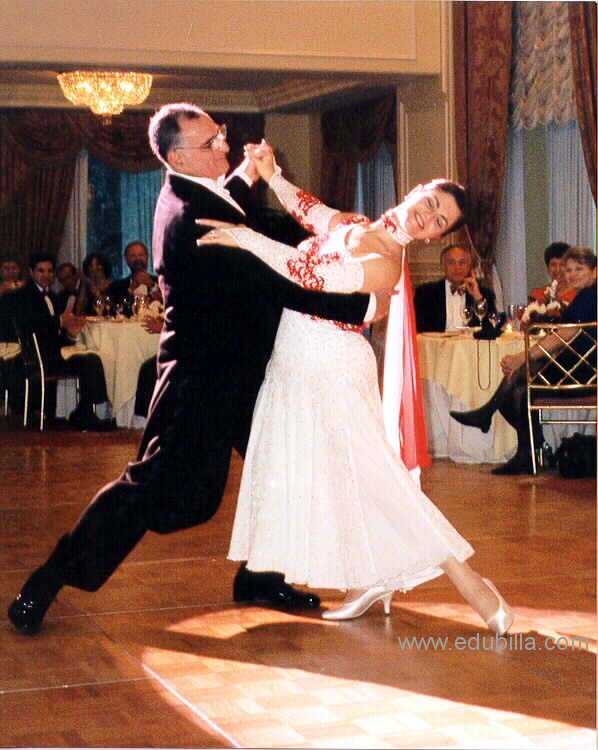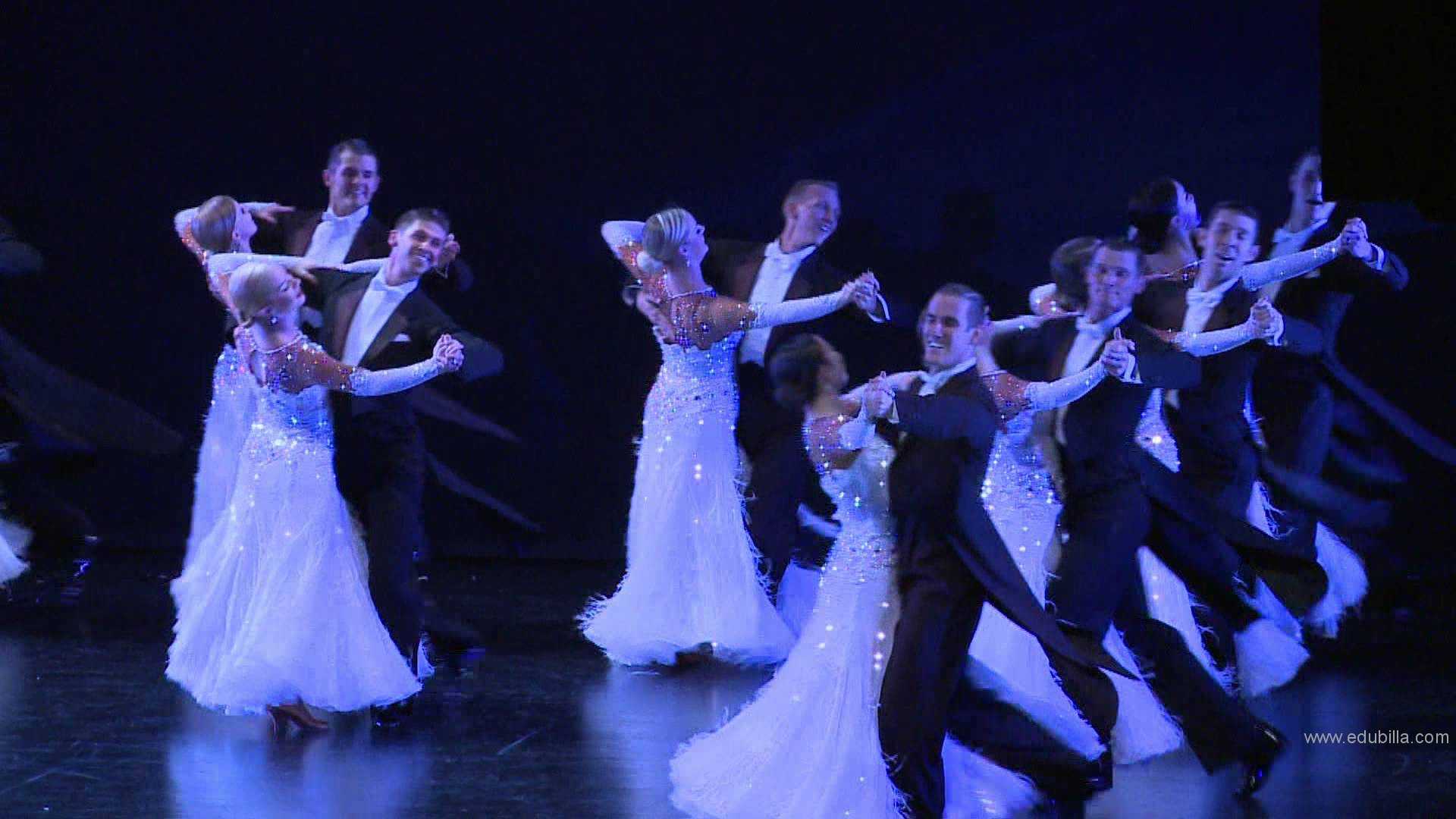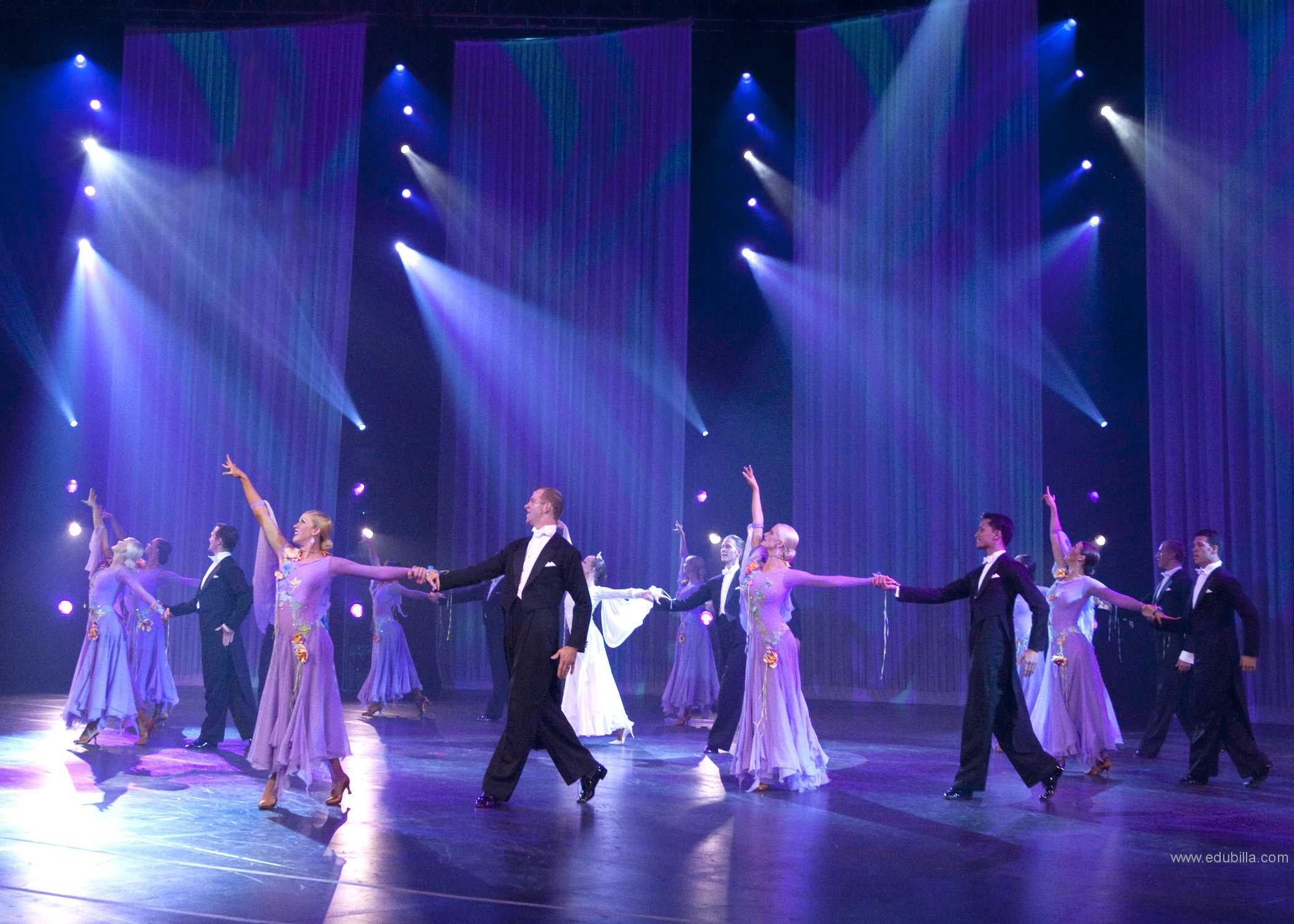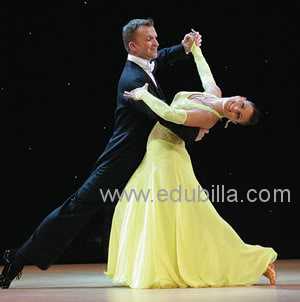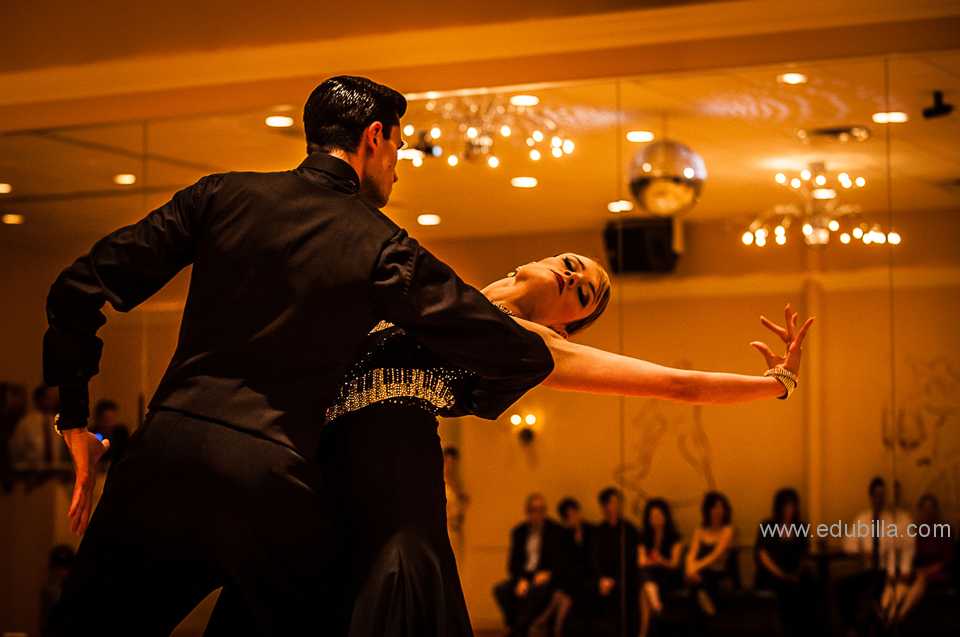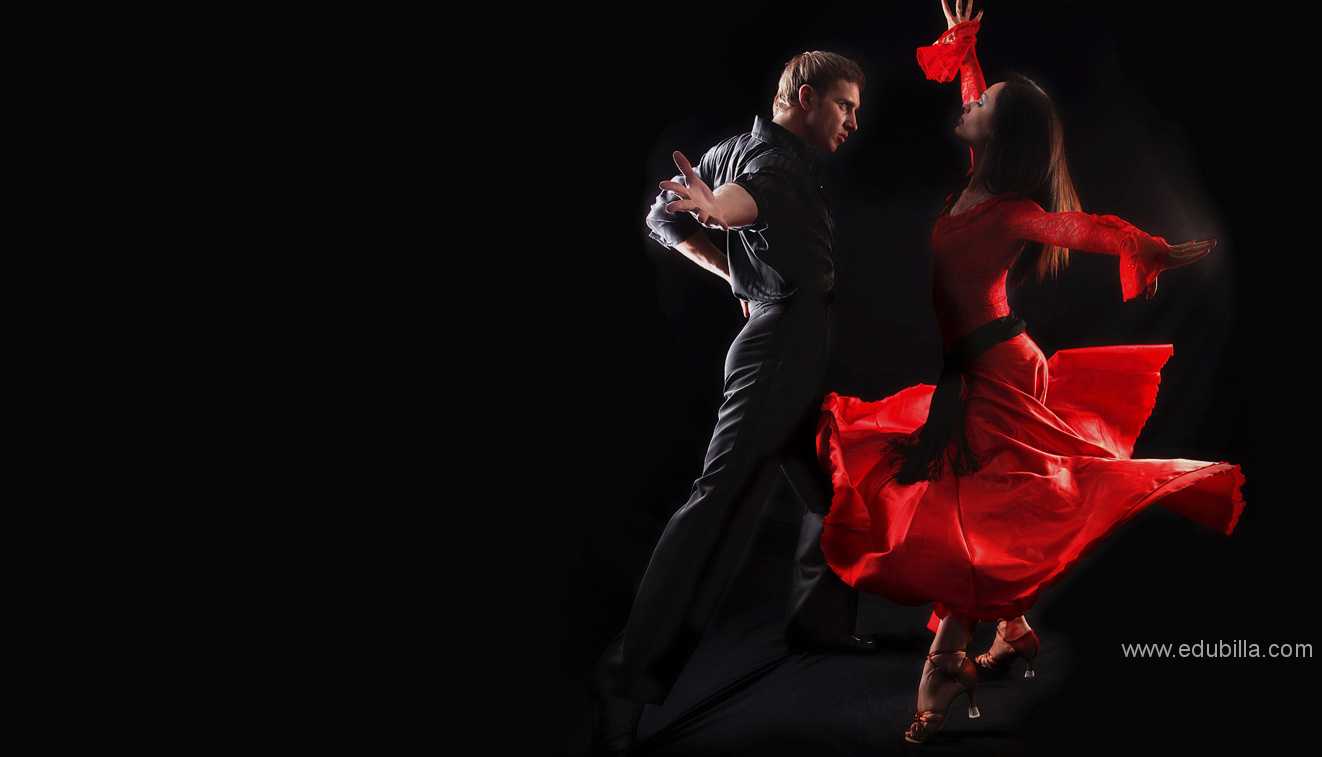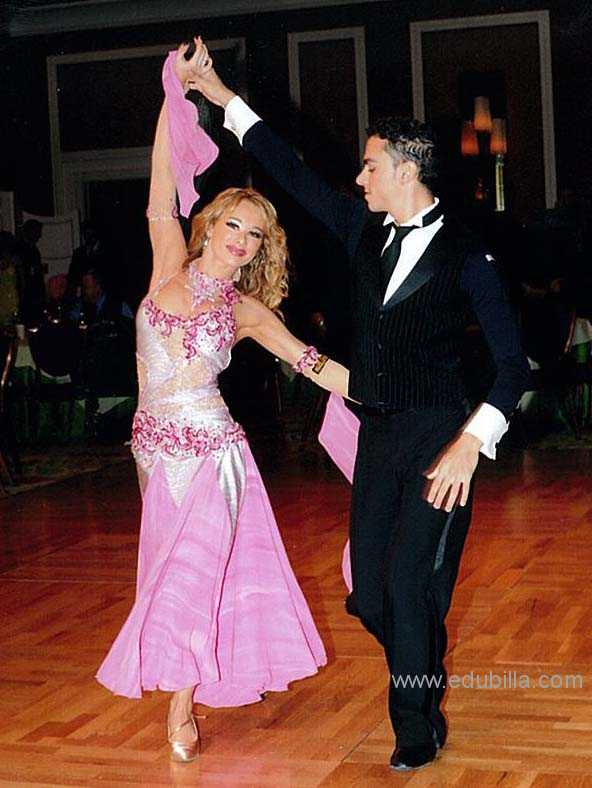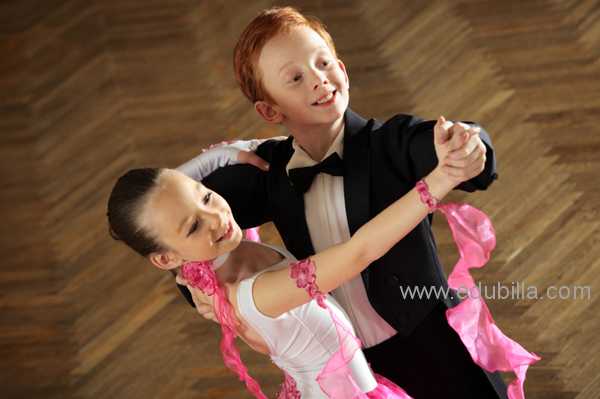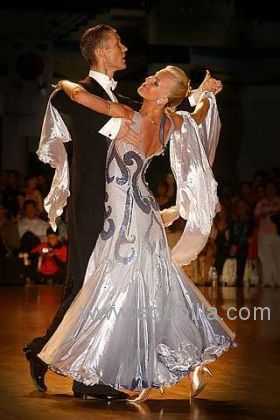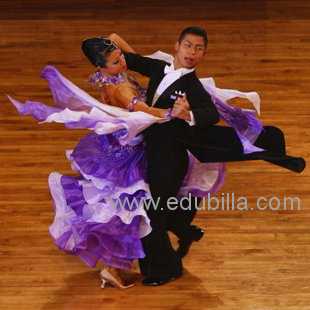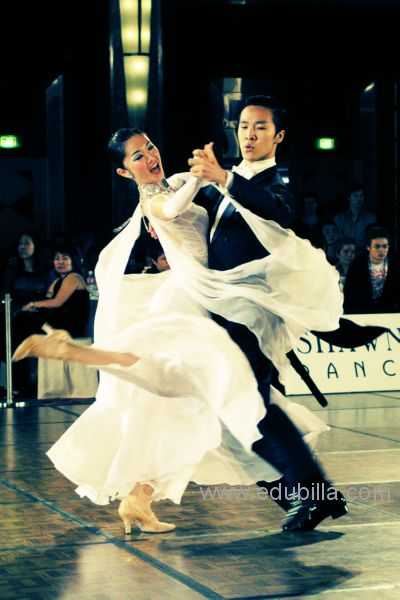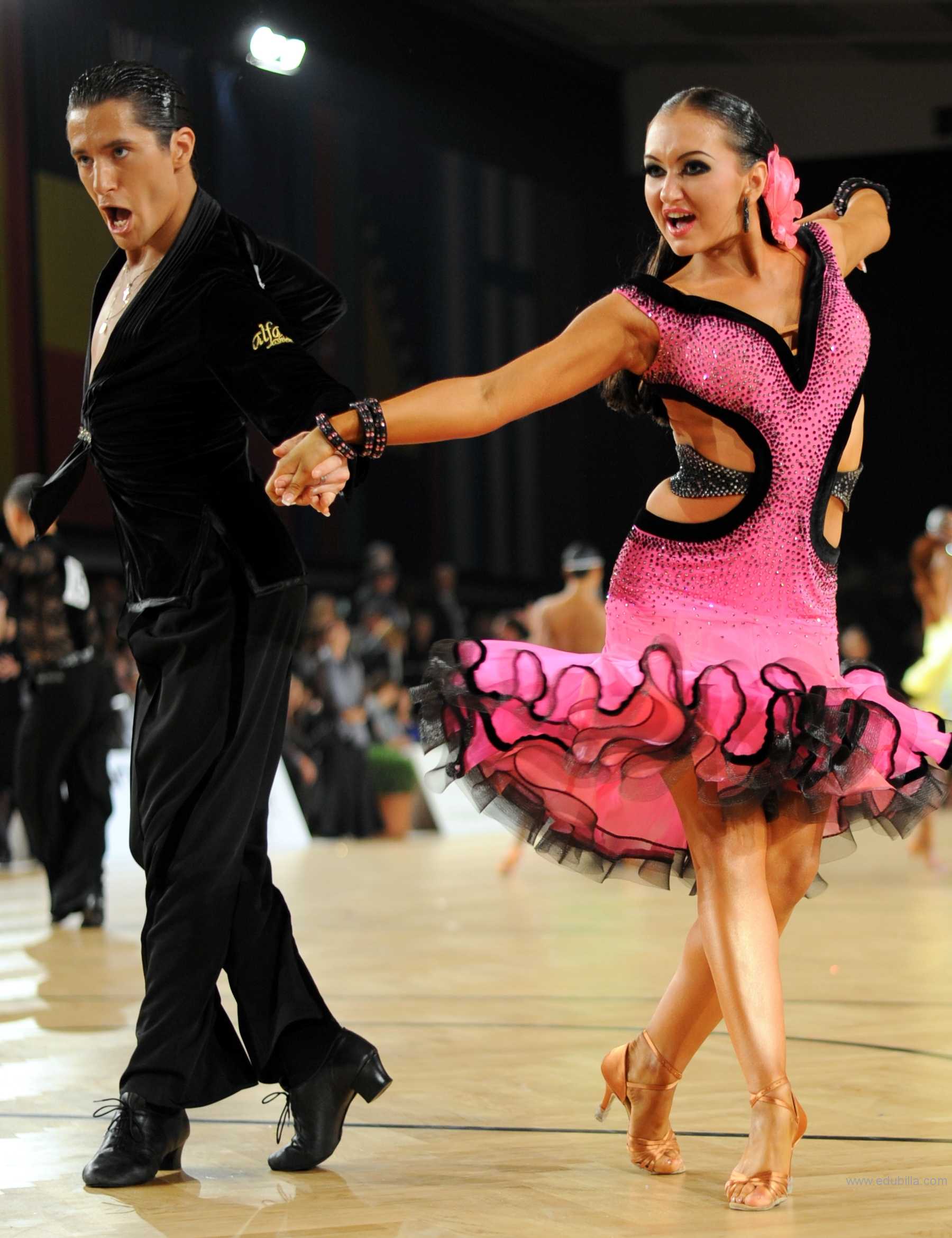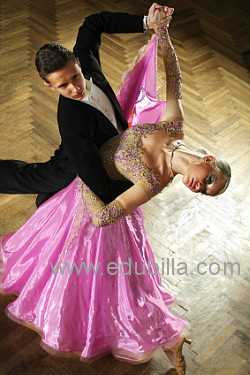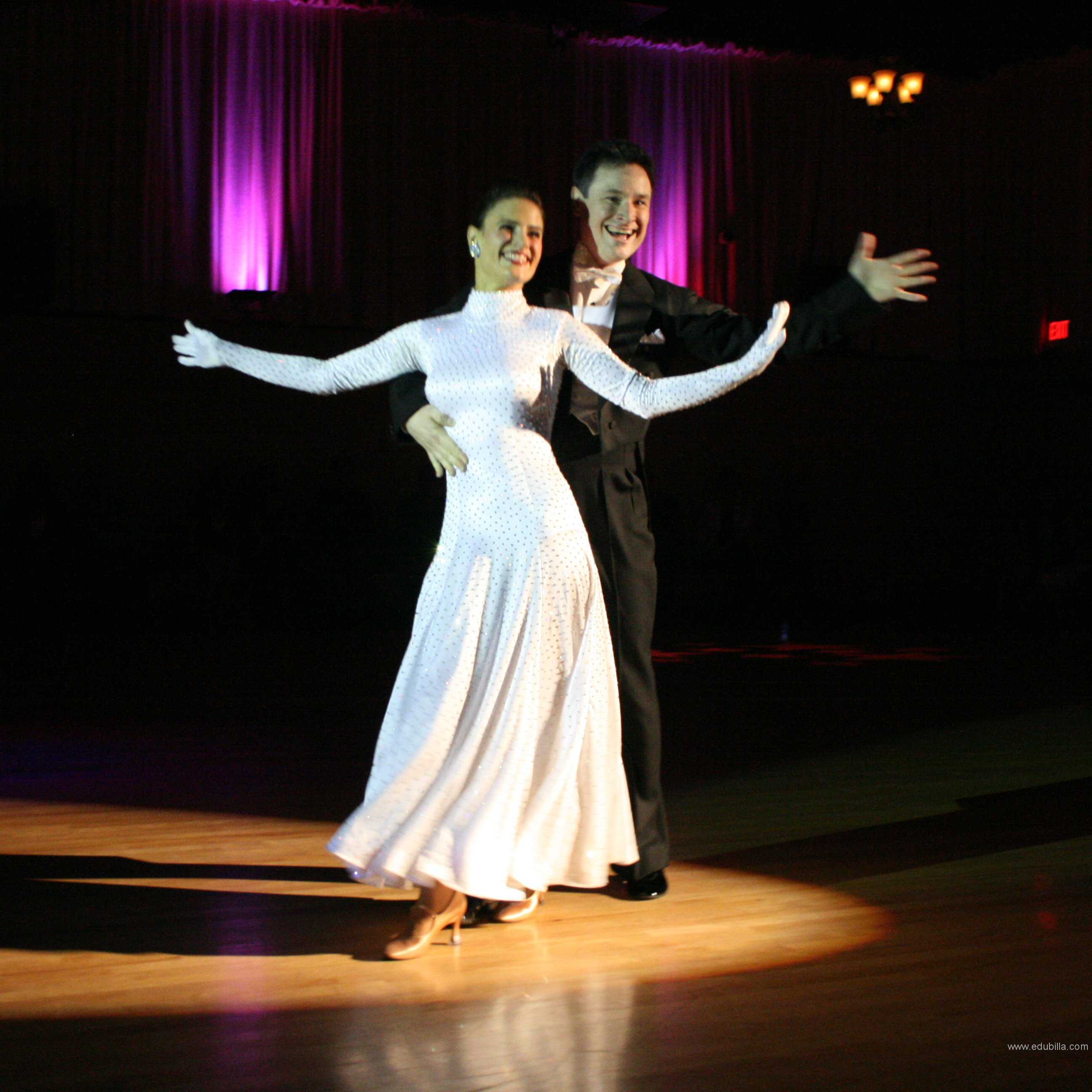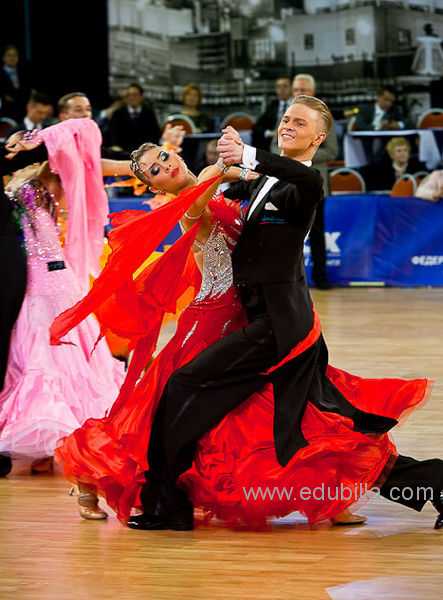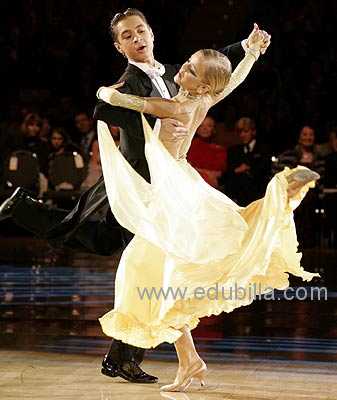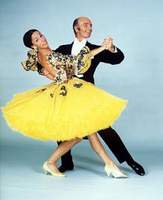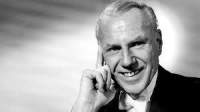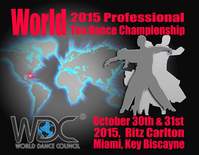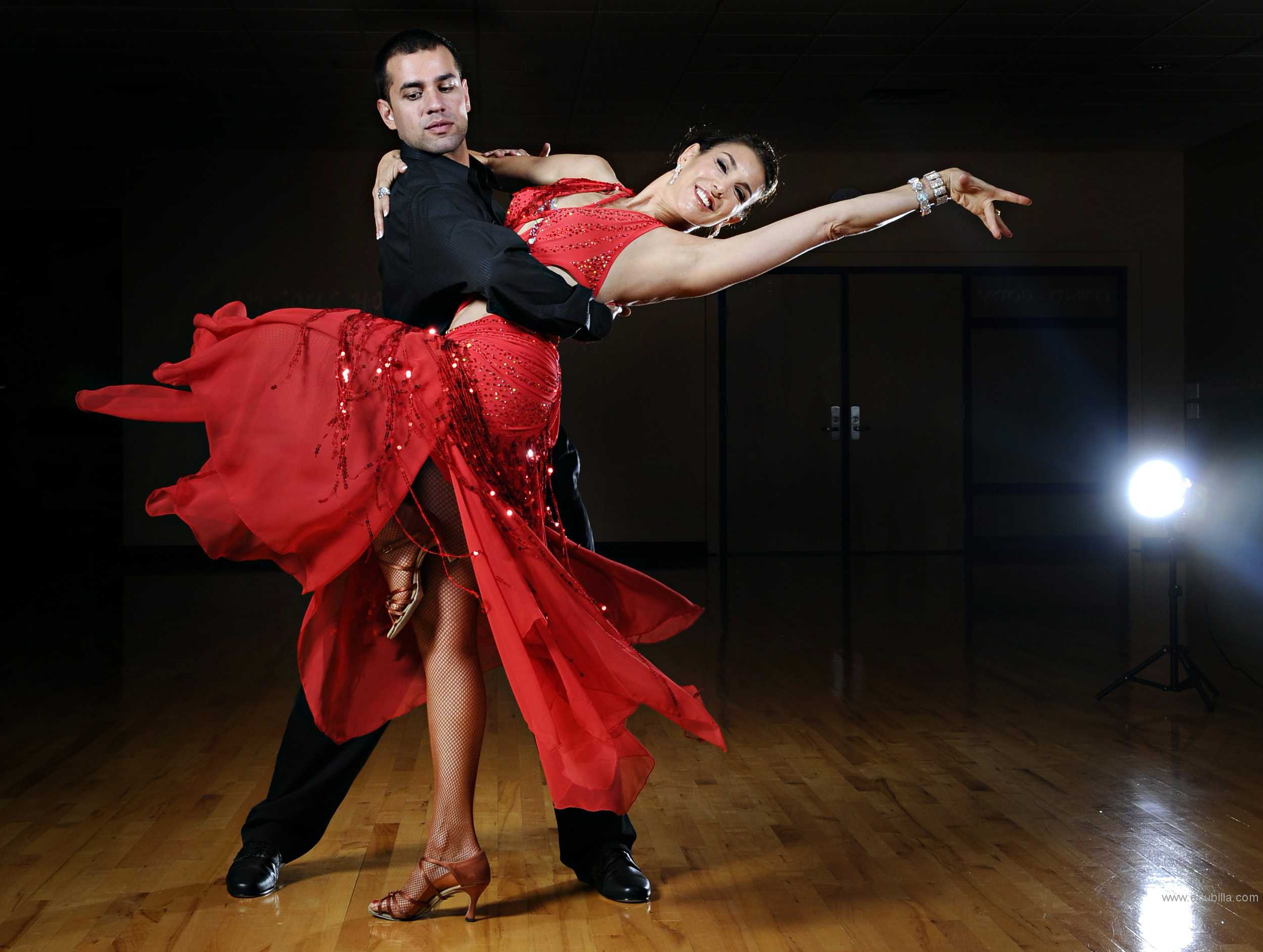
Overview Of Ballroom dance
Ballroom dance is a set of partner dances, which are enjoyed both socially and competitively around the world. Because of its performance and entertainment aspects, ballroom dance is also widely enjoyed on stage, film, and television.
Ballroom dance may refer, at its widest definition, to almost any type of partner dancing as recreation. However, with the emergence of dancesport in modern times, the term has become narrower in scope, and traditionally refers to the five International Standard and five International Latin style dances (see dance categories below). The two styles, while differing in technique, rhythm and costumes, exemplify core elements of ballroom dancing such as control and cohesiveness. Developed in England, the two styles are now regulated by the World Dance Council (WDC). In the United States, two additional variations are popular: American Smooth and American Rhythm, which combine elements of both traditional Latin and Ballroom dances.
Definitions :
The definition of ballroom dance also depends on the era. Balls have featured Minuet, Quadrille, Polonaise, Pas de Gras, Mazurka, and other popular dances of the day, which are considered to be historical dances. Today, the term applies to any one of the several dances in which two individuals, a "leader" and a "follower," dance with physical contact through their upper or lower bodies, or simply their arms depending on the particular variety of dance. Since most social dancing is unchoreographed, this contact is necessary for the leader to communicate the next dance move to the follower, and for the follower to respond to this insinuation. This stands in stark contrast with the style(s) of dance seen in clubs and other social gatherings where physical contact tends to be optional and the individuals in question can move freely without any such restraints imposed by firm physical contact or by the necessity to follow the rhythmic pattern present in the music. Some knowledge of known step patterns is essential for both the leader as well as the follower for ballroom dancing. As most ballroom style dances require some knowledge and practice, they have lessened in popularity among the public in the recent decades. Dance historians usually mark the appearance of the twist in the early 1960s as the end of social partner dancing.
Category of the International Style Ballroom Dances:
- Waltz
- Tango
- Viennese Waltz
- Slow Foxtrot
- Quickstep
Origin of the Waltz:
The waltz is probably the oldest extant ballroom dance (not including the medieval re-enactment of court dances) still regularly performed today. Set to ¾ time, it was too scandalous for the French court due to the close embrace that it required. King Louis XIII actually banned the dance from his court.
Like most legislated morality, the law failed to quell the act and the dance survived and spread. The dance halls in Vienna sped up the tempo and gave the world the intense and whirling Viennese waltz, and composers such as Johann Strauss Jr. became famous for the music they composed for the dance.
Evolution of the Tango:
Meanwhile, in the Latin world, the Spanish explorers brought flamenco with them to the new world. As it melded with slave dances from Africa and Central American cultures, it became known as the tango, with a particularly sensual variant becoming popular in Argentina. Traveling back across the Atlantic to France in 1910, it became popular through Europe and America and further.
Dance style classification:
WDC-defined Competition Dances
Waltz: 28–30 bars per minute, 3/4 time also known as Slow Waltz or English Waltz depending on locality
Tango: 31–33 bars per minute, 4/4 time
Viennese Waltz: 58–60 bars per minute, 3/4 time In some countries (for example, Austria) Viennese is known as the Waltz, while Waltz is recognized as Slow Waltz.
Foxtrot: 28–30 bars per minute, 4/4 time
Quickstep: 50–52 bars per minute, 4/4 time
Samba: 50–52 bars per minute, 2/4 time
Cha-cha-cha: 30–32 bars per minute, 4/4 time
Rumba: 25–27 bars per minute, 4/4 time
Paso Doble: 60–62 bars per minute, 2/4 time
Jive: 42–44 bars per minute, 4/4 time
American Style Competition Dances (only in the U.S. & Canada):
Waltz: 28–30 bars per minute 30–32 bars per minute for Bronze
Tango: 30 bars per minute 30–32 bars per minute for Bronze
Foxtrot: 30 bars per minute 32–34 bars per minute for Bronze
Viennese Waltz: 53–54 bars per minute 54 bars per minute for Bronze
Cha Cha: 30 bars per minute
Rumba: 30–32 bars per minute 32–36 bars per minute for Bronze
East Coast Swing: 36 bars per minute 34–36 bars per minute for Bronze
Bolero: 24 bars per minute 24–26 bars per minute for Bronze
Mambo: 47 bars per minute 48–51 bars per minute for Bronze
Game Rules
- A man who knows how to dance, and refuses to do so, should absent himself from a ball.
- Noisy talking and boisterous laughter in a ballroom are contrary to the rules of etiquette.
- In a ballroom, never forget nor confuse your engagements. If such should occur, an apology, of course, must be offered and pleasantly accepted.
- Always wear white gloves in a ballroom. Very light shades are admissible.
- Usually a married couple do not dance together in society, but it is a sign of unusual attention for a husband to dance with his wife, and he may do so if he wishes.
- Great care should be taken by a lady in refusing to dance with a gentleman. After refusing, she should not accept another invitation for the same dance.
- "When gentleman are introduced to ladies at a ball for the purpose of dancing, upon meeting afterward, they should wait to be recognized before speaking; but they are at liberty to recall themselves by lifting their hats in passing. An introduction for dancing does not constitute a speaking acquaintance"[Editor's note: ladies and gentlemen could not dance unless they had been introduced, so the hosts and escort spent much of the evening rushing about making introductions]
- All the above quotes are from "Rules of Etiquette & Home Culture" 1886
- There are some people who attend the fashionable balls of today, who express contempt for the little requirements of behavior known under the title of etiquette. The conduct of parties attending a ball should be governed by such rules as shall insure the entire company an evening of pleasure.
- Avoid slang phrases.
- Never take part in a quadrille without knowing something of the figures.
- Dancing is subject to much abuse by the thoughtless acquirements of bad habits
- Do not romp in dancing.
- Do not change from one set to another, it may place you with friends for the time, but will not add to your character as partners.
- Do not make a "grand rush" for places, which we regret to say is so frequent in our ball-rooms.
- Do not forget that you belong to the set, and not the set to you.
- Do not forget to thank your partner after seating her, for the favor she has bestowed upon you.
- Do not dance with your hat or bonnet on, leave them in the dressing room.
- Should you receive a polite refusal from a lady and then see her dancing with another gentleman, do not exhibit any symptoms of dissatisfaction, should this happen, as it often does, the gentleman is justified in never afterward repeating the request.
- Do not forget that perfect politeness conceals preference, and makes itself generally agreeable.
- Do not sway the body with each step.
- Do not hold the arms stiffly.
- Do not hold the arms out straight in imitation of a windmill-fan.
- Do not wait until the music is half over before selecting a partner.
- It is the duty of a gentleman having a place in a quadrille to have his lady with him, otherwise he forfeits his place.
- Always recognize the lady or gentleman director or master of ceremonies, with becoming politeness.
- A lady should never promenade the ball-room alone, nor enter it unaccompanied.
- In passing through a quadrille, let your disengaged arm hang easily at the side.
- Sets should be formed with as little confusion as possibly.
- The ladies' dressing-room is a sacred precinct, into which no gentleman should presume to look. To enter it would be an outrage not to be forgiven.
- It is very impolite and insulting to galop around or inside of other sets while dancing quadrilles.
- If a gentleman wishes to dance with a lady with whom he is not acquainted, politely ask the master of ceremonies for an introduction.
- The master of ceremonies is privileged to ask any lady or gentleman whether they wish to dance, make himself known and procure partners for all who desire to dance.
- In asking a lady to dance, be sure that she accepts, and then allow her to rise before you offer your arm.
- The ball-room was not designed for the purpose of making love.
- At the close of a quadrille, the gentleman should salute his partner, present his right arm and lead her to a seat selected by her. Etiquette for the Street.
- All of these quotes are from Prof. Clendenen's fashionable quadrille book and guide to etiquette. (1895)
Equipments Need For Ballroom dance
Performance Wear:
Depending on the type of ballroom dancing you do, there are several different styles of ballroom dancewear that may be appropriate for your performances. In general, women wear long dresses for the more traditional ballroom dances (like the waltz), and shorter ballroom dresses for dances like the samba. Of course, most dresses can go with a variety of different dance genres; in order to choose the perfect dancewear you'll have to think about your own style and the demands of your dance. A floor-length gown will not work well in a dance where you are in danger of stepping on it every two seconds.
A classic long black ballroom gown is always a safe bet. Everyone looks stunning in black, and the men are often also wearing black, so you can create a nice visual partnership by wearing black as well. Beautiful and provocative shorter gowns are also worn for several types of ballroom dancing.
While black is a color very often used in all dance clothing, including ballroom dancewear, there are options in other colors as well. If you want to stand out from the crowd, you may want to go with another color. Red is an extremely popular alternative that will look beautiful on virtually every dancer. Of course, since red is such a popular color alternative to black, you might blend in with red as well. In order to really stand out, you'll have to choose a color such as blue or green. Purple is becoming quite popular, and yellow has already been popular for quite some time.
Practice Ballroom Dance Clothes:
While performance dancewear for ballroom dancers almost always includes dresses for the ladies, practice clothing for women often includes a pair of pants. Of course, skirts and dresses are also worn to practice ballroom dancing, but practice pants with a wide flared leg are a popular look. These pants, because of their widely flared leg, give almost as much of a visual swirl as a ballroom gown.
History Of Ballroom dance
History of Ballroom Dance
Ballroom dance refers collectively to a set of partner dances, which originated in Germany and are now enjoyed both socially and competitively around the globe. Its performance and entertainment aspects are also widely enjoyed on stage, in film, and on television.
While historically ballroom dance may refer to any form of formal social dancing as recreation, with the eminence of dancesport in modern times the term has become much narrower in scope, usually referring specifically to the International Standard and International Latin style dances (see dance categories below). In the United States, two additional variations"American Smooth" and "American Rhythm"have also been popularized and are commonly recognized as styles of "ballroom dance".
The Origins:
Ballroom dancing traces its origins to the early 20th century, when the West End establishments were developing the art of ballroom dancing. The world’s leading board for ballroom dance examinations, the Imperial Society of Teachers of Dancing (ISTD), was established in 1904. There were some notable people who were instrumental in the development and promotion of modern ballroom dance including Josephine Bradley, the 'First Lady' and world class champion of ballroom dance; GK Anderson who founded the English style; Lady Humphries who helped establish the Modern Ballroom Dance Faculty of the Imperial Society; and Alex Moore who contributed to the writing of Technique of Ballroom Dancing.
The Closed Hold:
The dance moves in modern ballroom dancing have now been standardized, and presently, a dancer needs to pass several levels to be considered a master of ballroom dance. This is because ballroom dances are intricate, and they contain specific techniques, tempos, vocabularies, and rhythms, which take time to learn. Although every ballroom dance style has its own particular aesthetics and rhythms, they still have a commonality that makes them somewhat similar. One commonality is that they are all performed by a pair of dancers, and they are danced in “closed hold”. In the closed hold dances, the couples are required to maintain five areas of contact with each other, with the man’s left hand holding the woman’s right hand, the woman’s left elbow resting on the man’s right elbow, the woman’s left hand on the right upper arm of the man, the man’s right hand on the woman’s shoulder, and the right parts of their chests touching.
The Waltz:
The Waltz is one of the dances that are included in the International Style ballroom dance category. It follows a slow rhythm, and it is danced to about 30 bars or 90 beats per minute. Usually, one step is taken for every beat, or three steps for every measure. Despite having a slow tempo, the waltz can have advanced figures that may require six steps per measure, which may be complemented with various turns. In dance sport competitions, waltz features as the first singles dance in the standard category. It was previously called slow waltz.
The Tango:
Tango is a ballroom dance that originated from Argentina. There are two broad styles of modern day ballroom tango, which are the American Style and the International Style. Even though both styles are very popular, the International style is preferred in dance competitions. The American style, on the other hand, gives the dancers more freedom, whereby open moves such as alternate hand holds, underarm turns, and side-by-side choreograph can be executed.
The Viennese Waltz:
Viennese Waltz, or the Wiener Walzer in German, is another version of ballroom waltz. It incorporates various types of rotary dance moves which include turning in clockwise and anti-clockwise directions. When performing these moves, dancers execute non-rotating change steps.
The Foxtrot:
Foxtrot is a ballroom dance that was popularized by actor Harry Fox. Foxtrot was originally performed to big band music. However, after the release of the song “Rock Around the Clock” during the 1950s, foxtrot became synonymous with rock and roll music. In the years that followed, it was split into two forms, namely, the slow foxtrot, which is now referred to as foxtrot, and the fast foxtrot, which is now called quickstep.
The Quickstep:
Quickstep is a ballroom dance which is similar to foxtrot, but the dance patterns are very different. The patterns in quickstep have an extra half measure as well as multiples of measure, and the time beat that is usually followed is 2/4 or 4/4. Since quickstep was developed for jazz music, the tempo of the dance is quite fast.
Origin Of Ballroom dance
The term 'ballroom dancing' is derived from the word which in turn originates from the Latin word ballare which means 'to dance' (a ball-room being a large room specially designed for such dances). In times past, ballroom dancing was social dancing for the privileged, leaving folk dancing for the lower classes. These boundaries have since become blurred, and it should be noted even in times long gone, many ballroom dances were really elevated folk dances. The definition of ballroom dance also depends on the era: balls have featured popular dances of the day such as the Minuet, Quadrille, Polonaise, Polka, Mazurka, and others, which are now considered to be historical dances.
Early Modern Age:
The first authoritative knowledge of the earliest ballroom dances was recorded toward the end of the 16th century, when Jehan Tabourot, under the pen name "Thoinot-Arbeau", published in 1588 his Orchésographie, a study of late 16th-century French renaissance social dance. Among the dances described were the solemn basse danse, the livelier branle, pavane, and the galliarde which Shakespeare called the "cinq pace" as it was made of five steps.
In 1650 the Minuet, originally a peasant dance of Poitou, was introduced into Paris and set to music by Jean-Baptiste Lully and danced by the King Louis XIV in public, and would continue to dominate ballroom from that time until the close of the 18th century.
19th century:
The waltz with its modern hold took root in England in about 1812; in 1819 Carl Maria von Weber wrote Invitation to the Dance, which marked the adoption of the waltz form into the sphere of absolute music. The dance was initially met with tremendous opposition due to the semblance of impropriety associated with the closed hold, though the stance gradually softened.In the 1840s several new dances made their appearance in the ballroom, including the Polka, Mazurka, and the Schottische. In the meantime a strong tendency emerged to drop all 'decorative' steps such as entrechats and ronds de jambes that had found a place in the Quadrilles and other dances.
popularity:
Competitive ballroom dancing or dancesport began to overtake social dancing towards the end of the 20th century, with two main styles evolving: the International or WDC defined style and the American style. Dancesport had been around for some time, with a world championship being held unofficially in 1909. It first appeared on the television in 1960 and became very popular during the 1980s. Ballroom dancing has recently increased in popularity due to the presence of competitive dancing on television screens around the world.
Governing Bodies
World DanceSport Federation (WDSF):
The World DanceSport Federation (WDSF), formerly the International DanceSport Federation (IDSF), is the international governing body of dancesport and Wheelchair DanceSport, as recognised by the International Olympic Committee (IOC) and the International Paralympic Committee (IPC).
Originally founded in 1957 as the International Council of Amateur Dancers (ICAD), it took up the name IDSF in 1990. In 2011, it was renamed to WDSF to emphasise the global character of the organization.
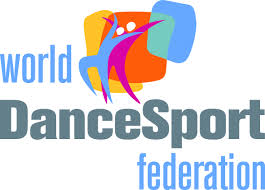
History of WDSF:
1909 First unofficial ballroom championships in Paris
1957 ICAD founded in Wiesbaden on 12 May 1957
1960 First television broadcast of Dancesport
1990 Name changed to IDSF
1992 Becomes a member of the General Association of International Sports Federations (GASIF) (now SportAccord)
1995 World Rock & Roll Confederation (WRRC) joins IDSF as an Associate Member
1997 Recognised by the IOC
2001 Subscribes to World Anti-Doping Code
2004 International Dance Organisation (IDO) joins IDSF as an Associate Member
2007 Presentation of the VISION 2012 project to the IDSF General Meeting
2008 IDSF and the International Paralympic Committee "enter into a collaboration agreement to promote Wheelchair DanceSport jointly"
2008 United Country and Western Dance Council (UCWDC) joins IDSF as an Associate Member
2008 IDSF General Meeting delegates the Praesidium to pursue a restructure of the federation under VISION 2012
2010 Launches the IDSF Professional Division
2011 Changes name to WDSF on 19 June
Statutory Objects:
As per its Statutes, WDSF pursues the following objectives.
To advance, promote, and protect the character, status and interests of DanceSport worldwide.
To develop standardised rules governing international competitions.
To author and enforce Codes of Conduct and Standards of Ethics for both athletes and officials.
To advise and assist the WDSF National Member Bodies and the Associate Members in the administration of DanceSport in their countries and organisations.
To represent DanceSport in the Olympic Movement.
WDSF Structure:
Democratic and efficient describe the style of governance and the structure of WDSF. The WDSF General Meeting elects the 12-member Presidium and delegates the management to the latter. On the operational level, the Managing Committee – made up of the President, First Vice President, Treasurer, Secretary General and Sports Director – tends to the day-to-day running of the federation. The committee is supported in its task by the standing commissions, by advisers and consultants, and by the administration.
To Visit WDSF Click Here.
Awards Related To Ballroom dance
BDF Awards:
The BDF awards have grown to be one of the most prestigious award ceremonies in the world today.
IDTA Awards:
International Dance Teachers Association Awards:
The IDTA is a recognised awarding organisation, recognised by the national qualifications regulators in England and Wales, Ofqual and the Council for Dance Education and Training, and is also affiliated to the British Dance Council, the Central Council of Physical Recreation and the Theatre Dance Council International.
Carl Alan Awards:
The Carl Alan Awards is an awards event held annually in the United Kingdom and honouring people who have made a significant contribution to the dance and theatre industry, such as teachers, performers and choreographers. They have been dubbed "the Oscars of the dance world" and are presented by the International Dance Teachers Association, in co-ordination with the Theatre Dance Council International.
Sample Documents Of Ballroom dance
-Viswanathan Anan

